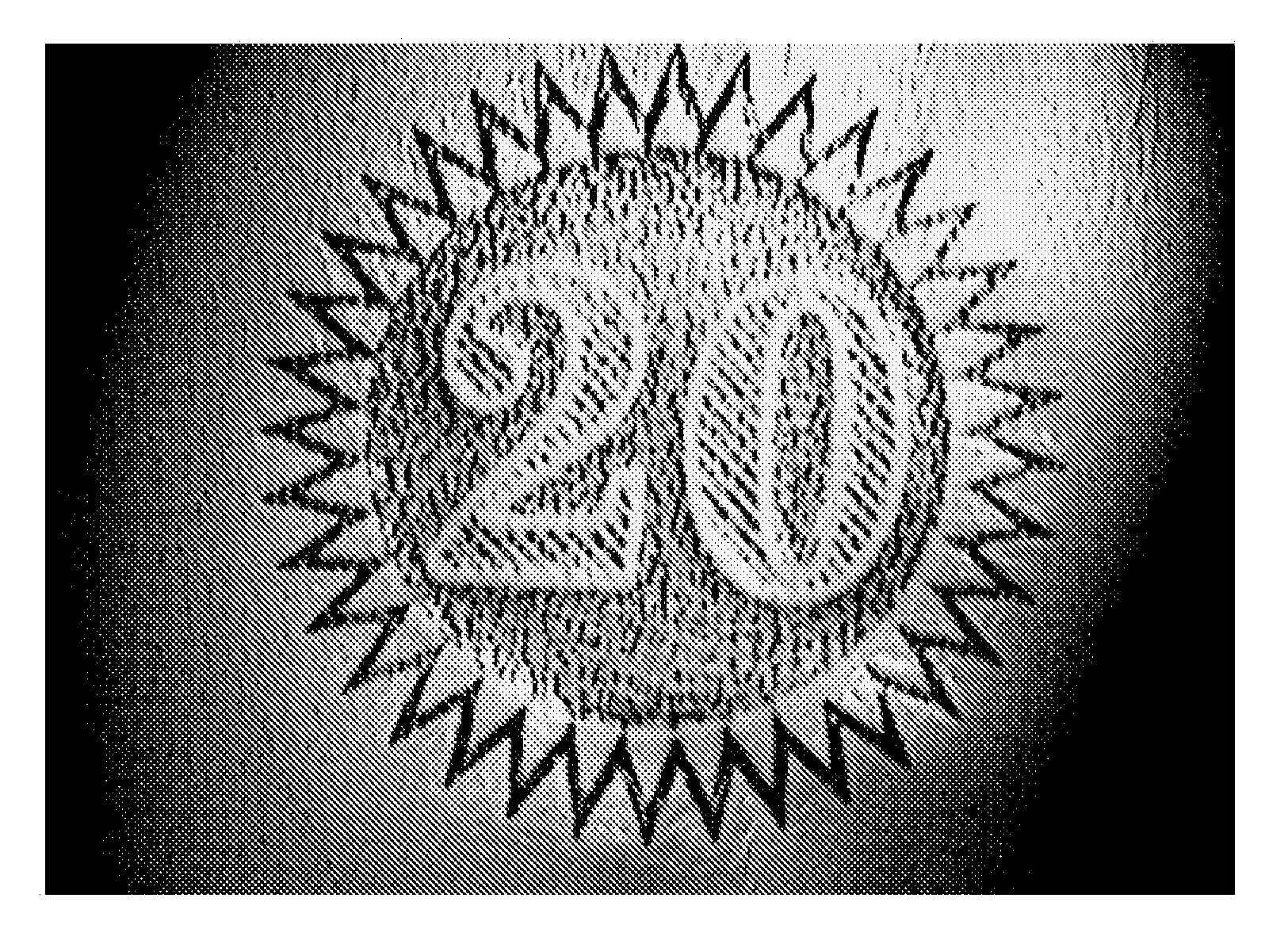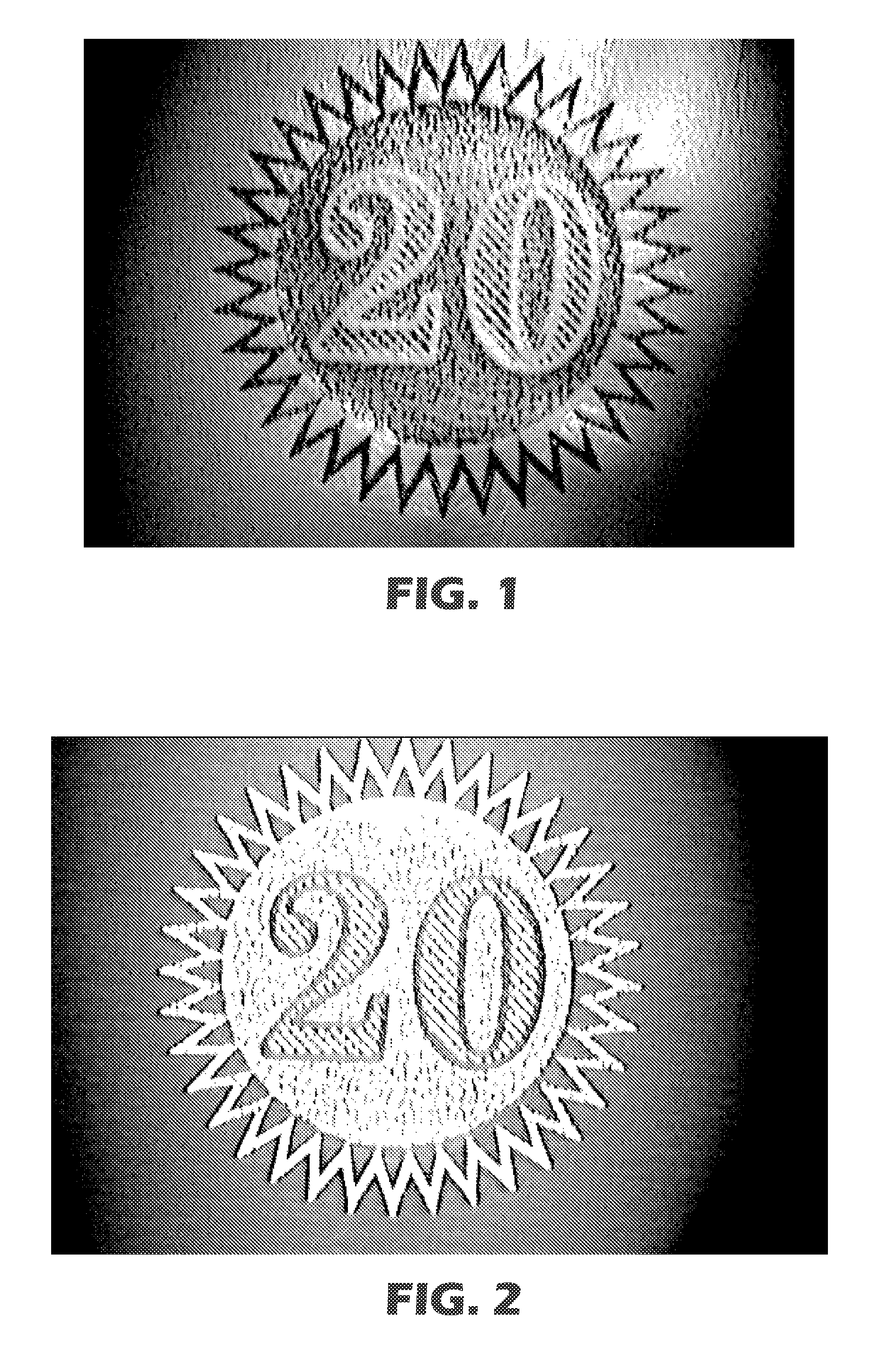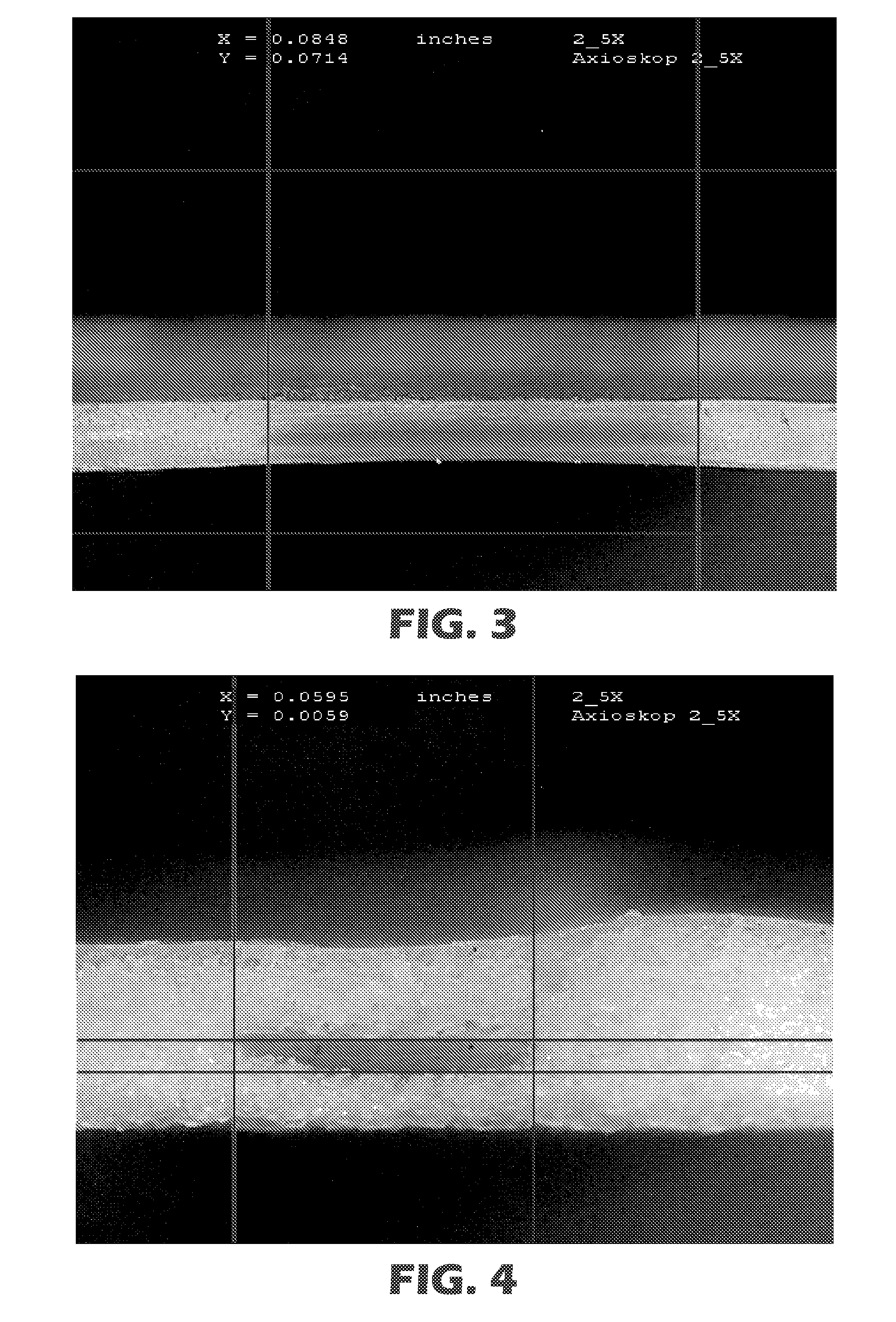Foam security substrate
a technology of foam and substrate, applied in the field of foam security substrate, can solve the problems of difficult copying, damage, and not being able to provide the same texture and handling characteristics of paper substrate, and achieve the effect of high melt strength and deterring counterfeiting
- Summary
- Abstract
- Description
- Claims
- Application Information
AI Technical Summary
Benefits of technology
Problems solved by technology
Method used
Image
Examples
example 4
[0176]A laminate was prepared using two foam layers and a multilayer optical film (MOF) in a F / MOF / F sandwich. A mixture of 78% high melt strength polypropylene (Profax™ PF814, Montell North America, Inc., Wilmington, Del.), 7.5% conventional polypropylene, (PP 3376 Fina Inc., Dallas, Tex.), 10% elastomeric polyethylene, (Affinity™ 8200 Dow Chemical, Midland, Mich.), 2.5% wollastonite 520S, and 2.0% by weight of FM1307 chemical blowing agent (50% azodicarbonamide loaded in polyethylene) (Ampacet Co.,) was extruded in a 6.4 cm single screw extruder equipped with a Saxton single stage screw at 40 rpm and a temperature profile of 138° C.-226° C.-138° C. The exit melt temperature was 132° C., and the exit pressure was 84 kg / cm2 (1200 psi). Approximately half of the extruded mixture was split into two streams using a “T” junction in a 20.3 cm feedblock / die assembly at 182° C. There was no nonfoam core layer for this sample. The resulting foam sheet was cooled on a chrome cast roll at 38°...
example 5
[0179]The foam laminate of Example 4 was embossed using the process described in the Test Methods section. The laminate was embossed at 91° C. and a pressure of 39 kg / lineal cm of nip at 1.5 m / min. The images were embossed, providing a unique optical security element. The indicia from the 140-micron features were multi-colored with a gold-leaf look in reflected light. The indicia was multi-colored in transmitted light (i.e., when holding the embossed image to a light source) with green, blue, and purple being visible. The difference in transmitted color between the unembossed and embossed sample of Example 4 is due to the compression of the MOF layers, which changes the optical properties of the film.
example 6
[0181]A laminate was prepared as in Example 4 except the multilayer optical film was flame embossed using the process described in U.S. Pat. No. 6,096,247. The film was passed at 80 meter / min over an open natural-gas powered flame (50 BTU / hr) provided by a ribbon burner (Flynn Burner Corporation, New Rochelle, N.Y.) at an air:fuel setpoint ratio of 9.6. The backside of the film was in contact with a chill roll covered with chlorosulfonated elastomer (American Roller Company, Union Grove, Wis.). The film was then embossed at 93° C. and a pressure of 6.2 kg / cm2.
[0182]The flame embossed MOF and foam layers were then laminated and embossed using the same procedure and conditions as in Example 4. The indicia from the 140-micron features were multi-colored with a gold-leaf look in reflected light. In reflected light, the MOF strips appeared to be yellow-orange in color; however, in transmitted light the strips are light blue, providing a rapid, unique verification of authenticity. The fla...
PUM
| Property | Measurement | Unit |
|---|---|---|
| melt strength | aaaaa | aaaaa |
| melt strength | aaaaa | aaaaa |
| average cell size | aaaaa | aaaaa |
Abstract
Description
Claims
Application Information
 Login to View More
Login to View More - R&D
- Intellectual Property
- Life Sciences
- Materials
- Tech Scout
- Unparalleled Data Quality
- Higher Quality Content
- 60% Fewer Hallucinations
Browse by: Latest US Patents, China's latest patents, Technical Efficacy Thesaurus, Application Domain, Technology Topic, Popular Technical Reports.
© 2025 PatSnap. All rights reserved.Legal|Privacy policy|Modern Slavery Act Transparency Statement|Sitemap|About US| Contact US: help@patsnap.com



